2024-09-07
That time I resurfaced a gravel road by hand
I posted a couple days ago about my tendency to do things the hard way or, more to the point, the manual way. A year ago I had such a project going on. We had a section of rock road just 80 feet from my cabin that kept washing away after any heavy rain and last year, we'd had 3 rain events of 7"+ in 24 hours. Each of those and a few others kept reforming gullies and I would spend 30 minutes shoveling the loose gravel back in. It wasn't a fix.
In late August I decided to put my thinking cap on and fix it properly. There were two problems. First, the road is a small hill and the water just flowed down it pushing gravel the bottom. My fix of throwing in loose gravel back in didn't hold because it wasn't properly held in place. My fix had two components.
First, I needed to add a slight grade to the road such that the water would move sideways off the road gradually instead of just flowing down the road building the energy it needed to wash away gravel. So at the top of this little section I started pulling dirt off the downhill side and grading it into the gully area. I mixed a lot of dirt into the gravel as I went. In the photo taken on the first or second day of 4 days I was just getting started. The gully would always form on the left side, I was pulling dirt from the right side to raise the left side.
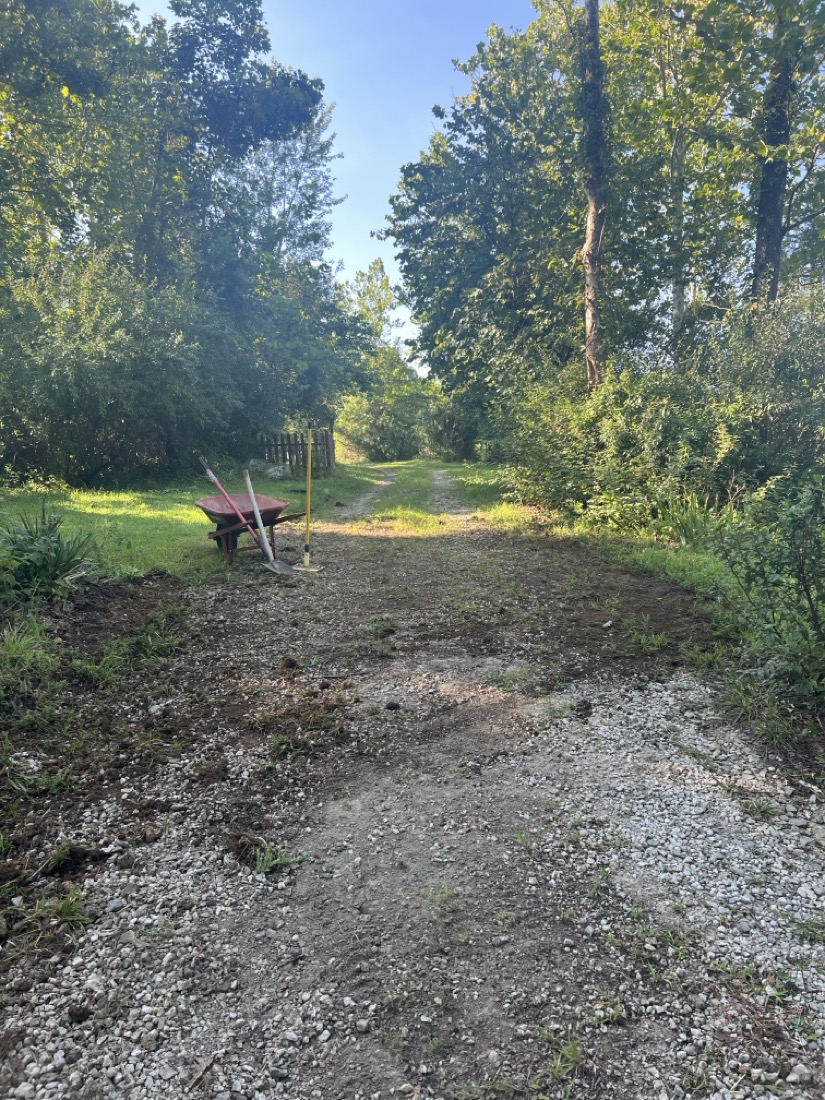
The end result was the gully was packed with a mix of dirt and gravel. After some time of road use and gravity that mix would pack down to form a matrix that would be less likely to move. Also, because I added a slight grade to the road, water would move off to the right side rather than down the path of the road. It all looked a bit messy but after 4-5 days, about 10 hours of work, it was done and has not washed out since. Each of those hours of work was exercise with my heart rate averaging about 125 bpm. It was late August so I'd get started by 8am and finish around 10 before it got too hot.
The easy, conventional fix would have been a tractor with a grading blade but I used a wheel barrel, shovel, rake and a trail tool often called a fire rake as it's used to fight wildfires. It has a flat blade end that looks like a large hoe on one side. The other side has six large prongs for raking. Best tool ever for building trails and fixing roads. Perfect for scrape-digging the dirt and gravel from one side to the other.
Once I'd completed the project and was satisfied that this was a real fix I moved further down the road to another section where we have a small creek. This was a much bigger project and at first I wasn't sure I would tackle the whole thing. My plan was to just get started and go as long as I wanted to. The idea was similar but this was a larger section of road that had a bigger problem. A creek that would over flow and not just wash the gravel away at the creek crossing but would also flow along the length of the road, forming a second creek and taking gravel along with it. This had been going on awhile and a lot of gravel was being washed off the road into the woods. The result was the road was gradually just disappearing leaving the larger rocks of the road base still intact. It really needed to be fixed.
On the first day I just started pulling in dirt from downhill side of the slope. Two days of this and I was beginning to grasp that this would be a much bigger project that would also need to involve a fix to the creek. How does one fix a creek? How can a creek even be broken?

September 2, 2023, Day 1
We hadn't had rain so it was just a dry creek bed so I took a walk to have a look. The problem was easy to see. The creek bed had been filling with natural debris for a very long time. Lots of extra gravel washes down from uphill so it was thick with gravel of all sizes. And because this is a creek that moves through the woods it was also filled with fallen branches, roots and leaves. Much of the creek was so full that it was no longer a path for the water through the woods as it was filled to near level with the rest of the woods and so with any big rain it would slowly backfill up the hill to the road. It just didn't have a clear channel to continue flowing downhill to its end at the lake. I had never taken the time to look at the problem and once I did so it was obvious.
What followed was 90+ days of labor. For three months, September through the first week of December I worked 2-3 hours in the morning using a wheel barrel and my hand tools to remove the gravel from the creek and cart it out to spread on the road that had been washing. I alternated between moving rock to the road and raking dirt from the downslope side of the road. The end result would be that gradually I would increase the height of the road with a mix of dirt, clay, sand and gravel. I didn't know in the first days how long it would take only that I would just go until it seemed to be fixed.
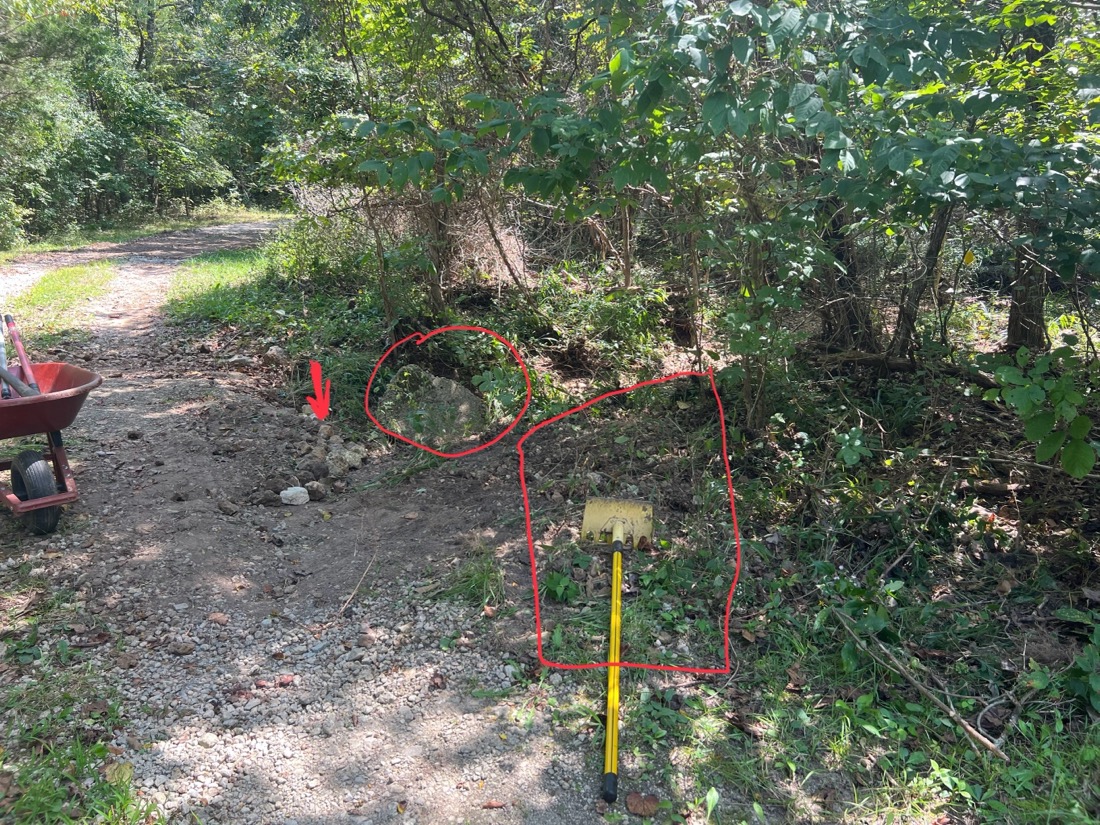
Just getting started, day 4, working around the concrete bridge to clear the flow. I had to move a very large chunk of concrete (circled) that was blocking flow from the culvert under the arrow. I rolled and pushed it down the creek bed then up out of it. Slow work as it weighs, I'm guessing 200+lbs? My yellow trail tool is laying in a spot that would need to be lowered several inches to allow water run-off from road into creek. The right side of photo is the downhill side of the creek.
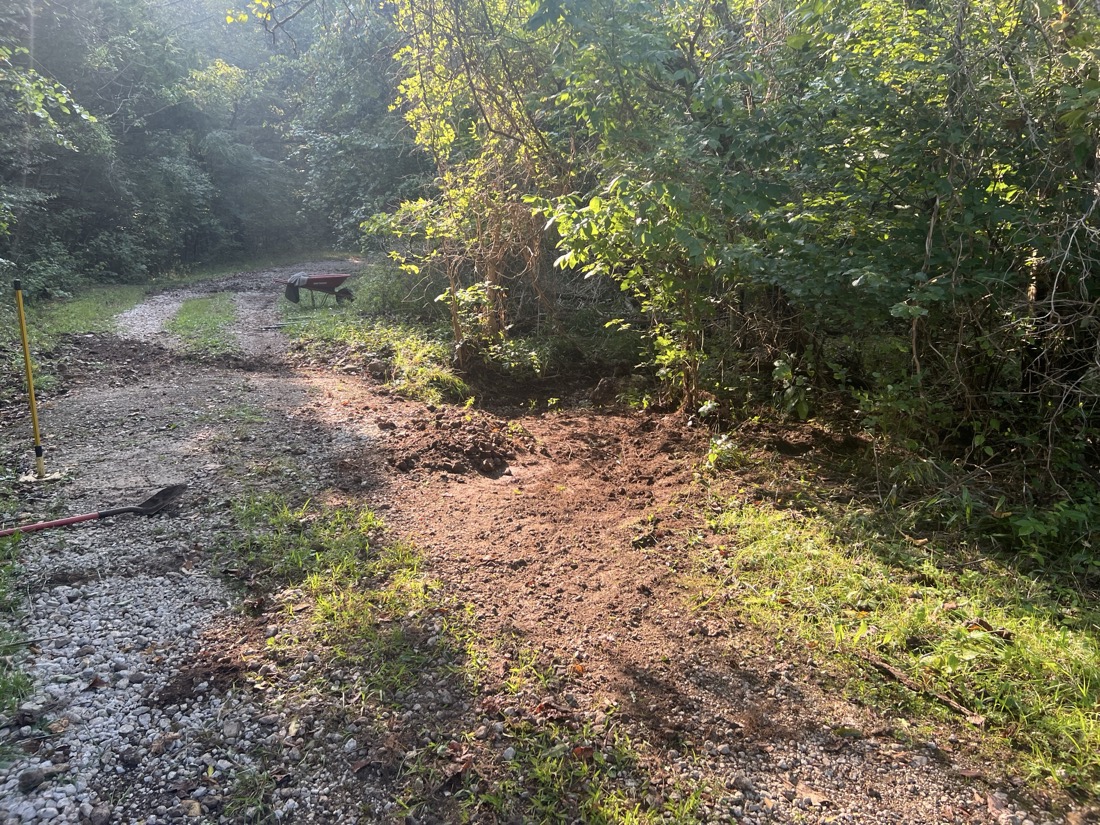
Three days later. Lowered it by about 8" by removal of debris and dirt. I would then add about 2" with creek rock to keep the dirt from washing. The end result being several inches lower than the road and an easy way for the water to move down into the creek.
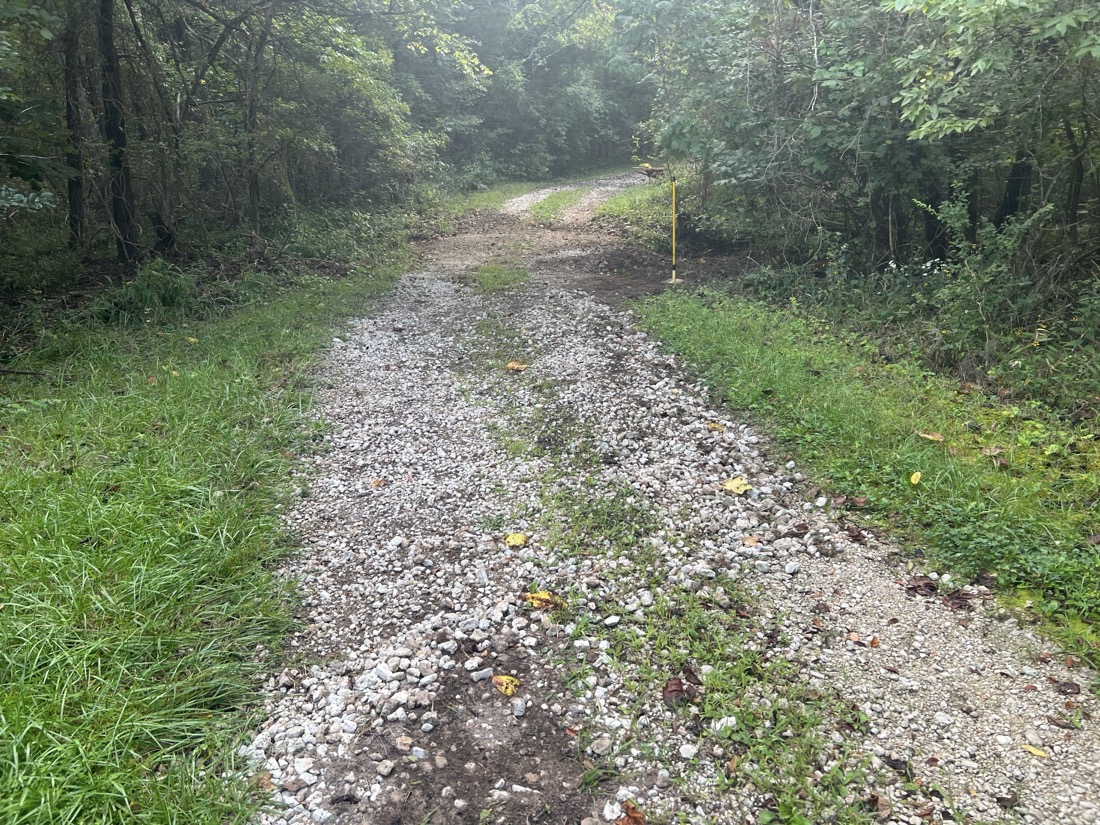
Photo taken from further back showing the road
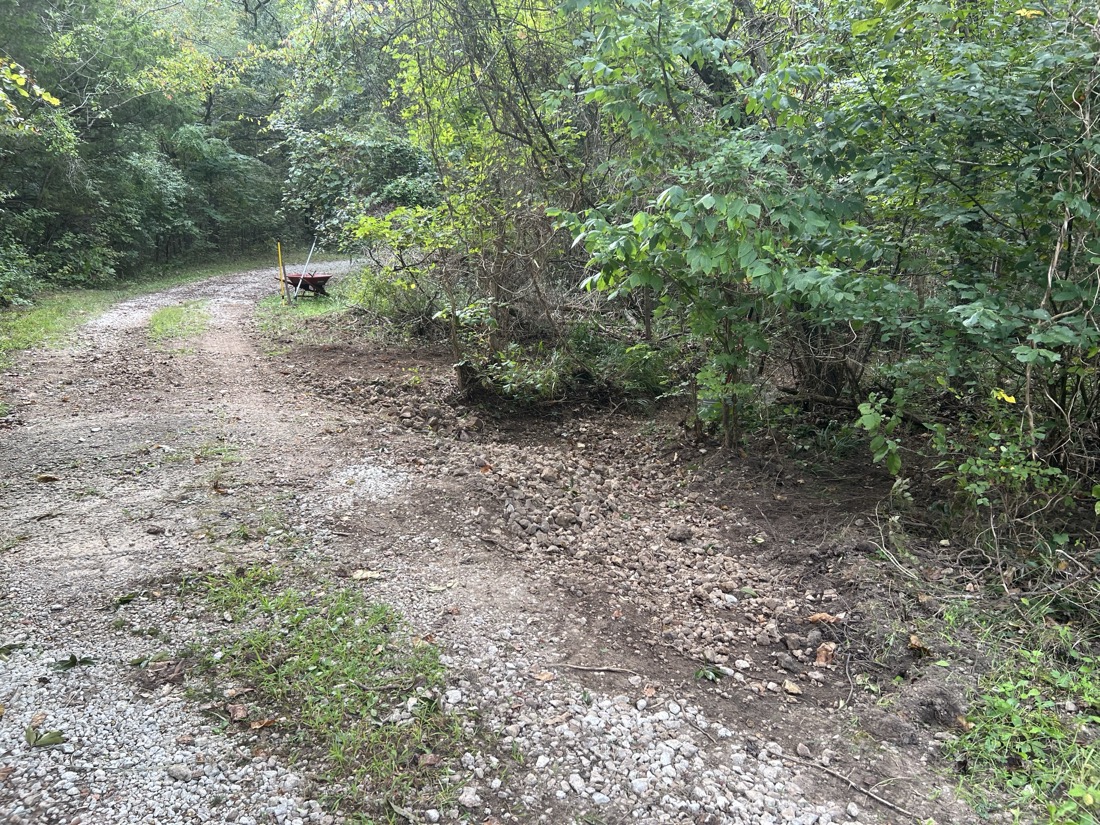
Taken a couple days later. Rock now covering the dirt to prevent erosion.

Photo taken from creek bed. I'd cleared debris, roots and rock from the first 20 feet of creek bed. I was 8 days into it at this point. It was September 11 and I had no idea I would be at it for another 80 days.
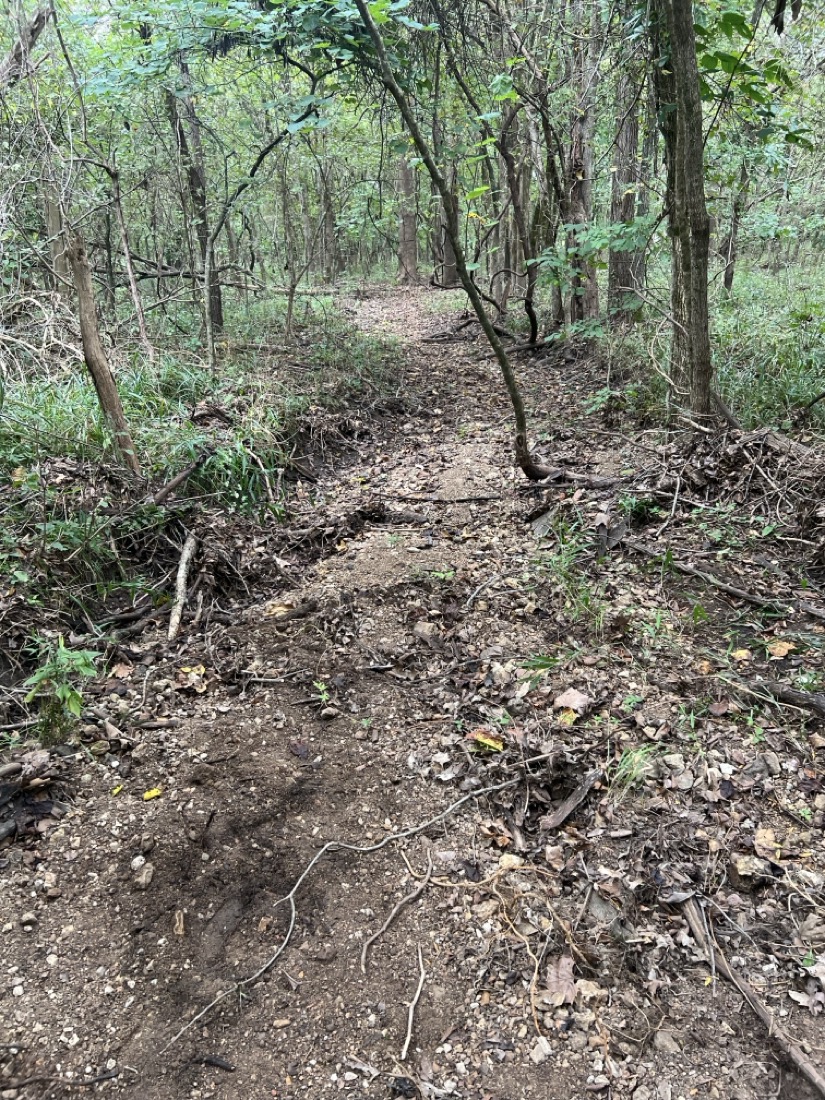
Looking down the disappearing creek bed filled with excess gravel and forest debris.
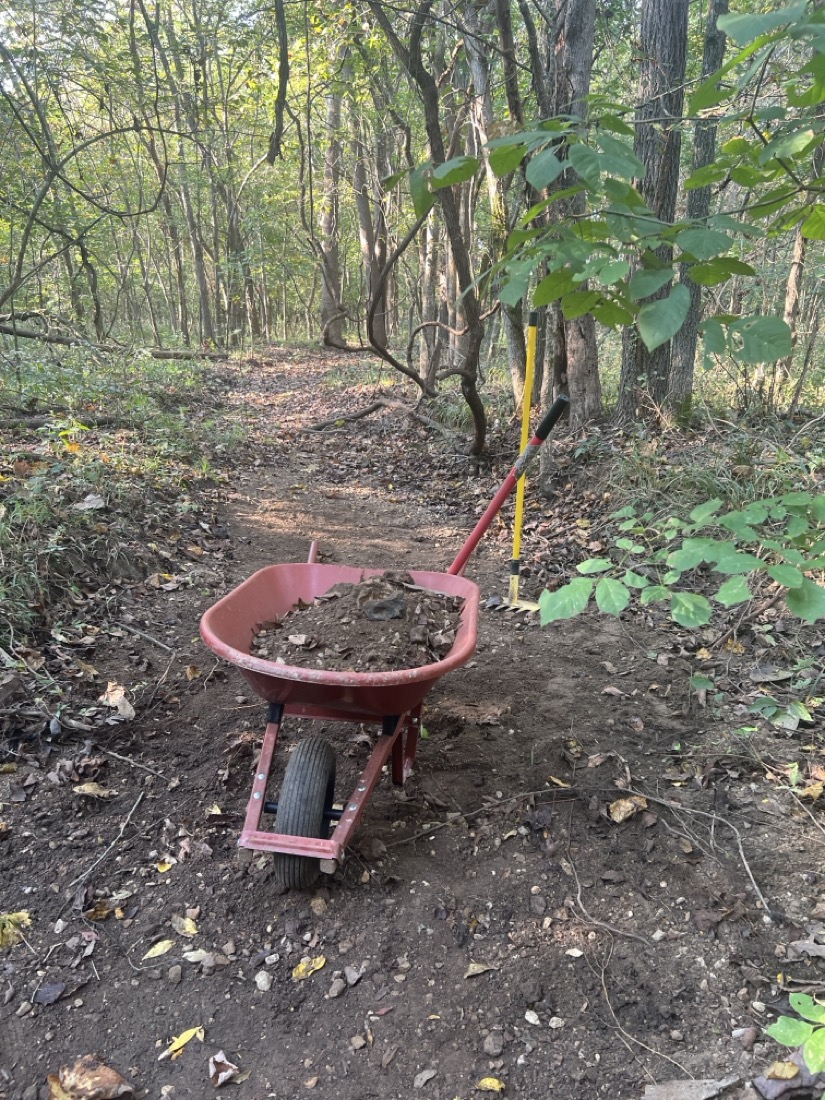
September 23, a full load of sand and gravel to put on the road.

Hard to see in photo but the right side where the leaves are is the begining of the worst part of the gully. The road base and gravel were washing away and this whole section of road became a water flow with any large rain.
The plan, as much as I had one, was to pull dirt into the road, mix it with existing road gravel and creek gravel. All the while I was doing that to the road I was also digging a new ditch to direct water on the downslope side of the road to the right (south side). The north side of the road is a gradual uphill slope that carries a lot of water down to the road which, when mixed with the creek overflow, became the road-creek problem.
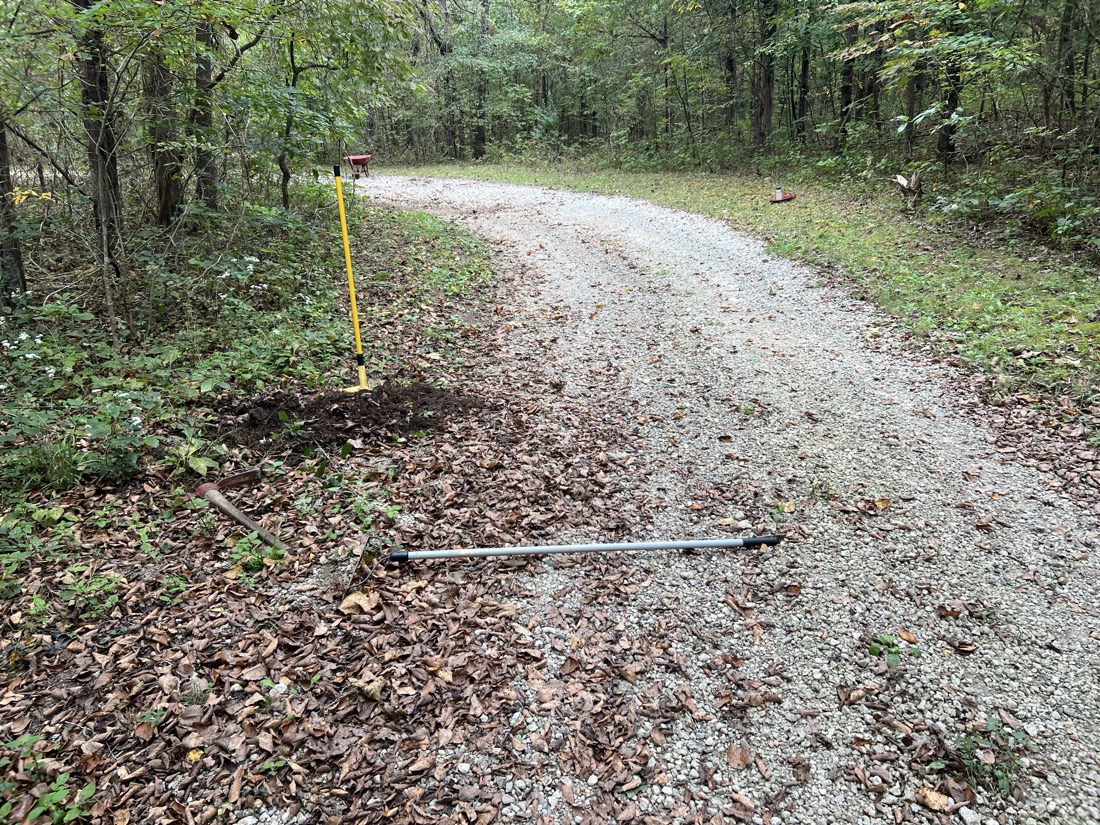
Photo taken further down the road looking north. The right of the image is the uphill side. I would be removing dirt and rock from the left side to mix into the road while also making a ditch to move water away from the road.
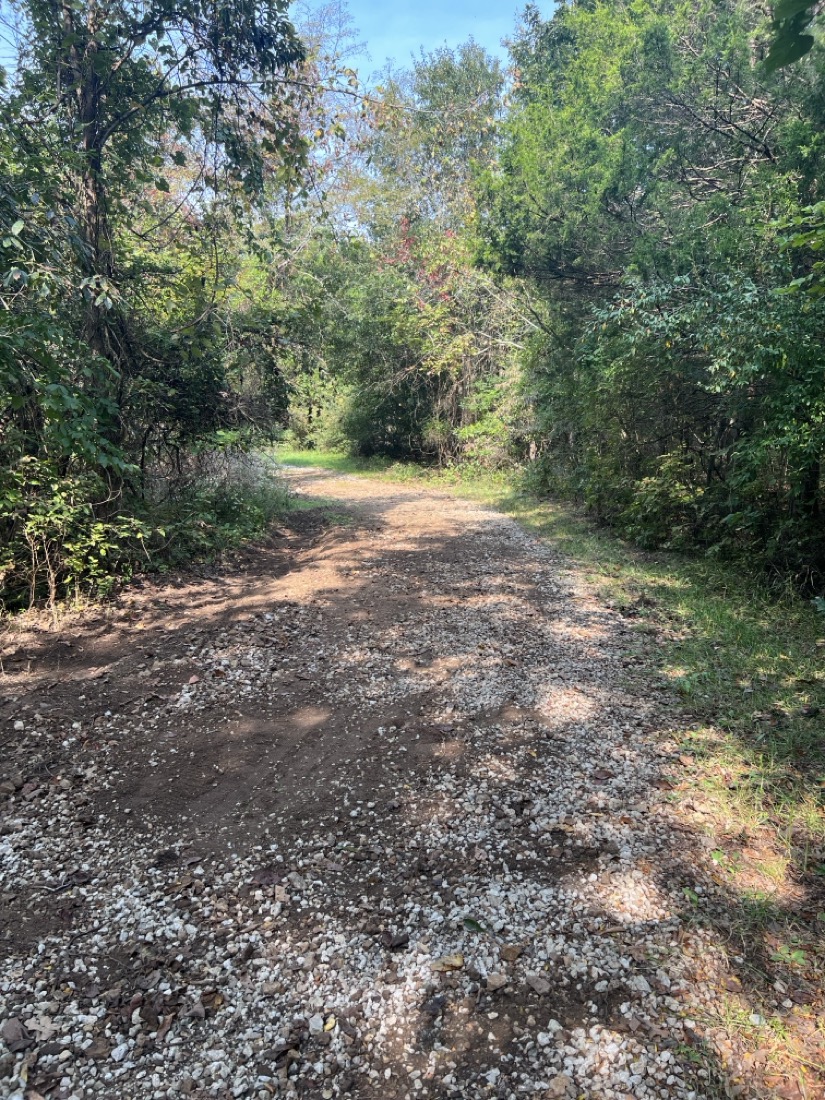
September 22, still early days but ditch is forming to the left, road slowly getting dirt mixed in.
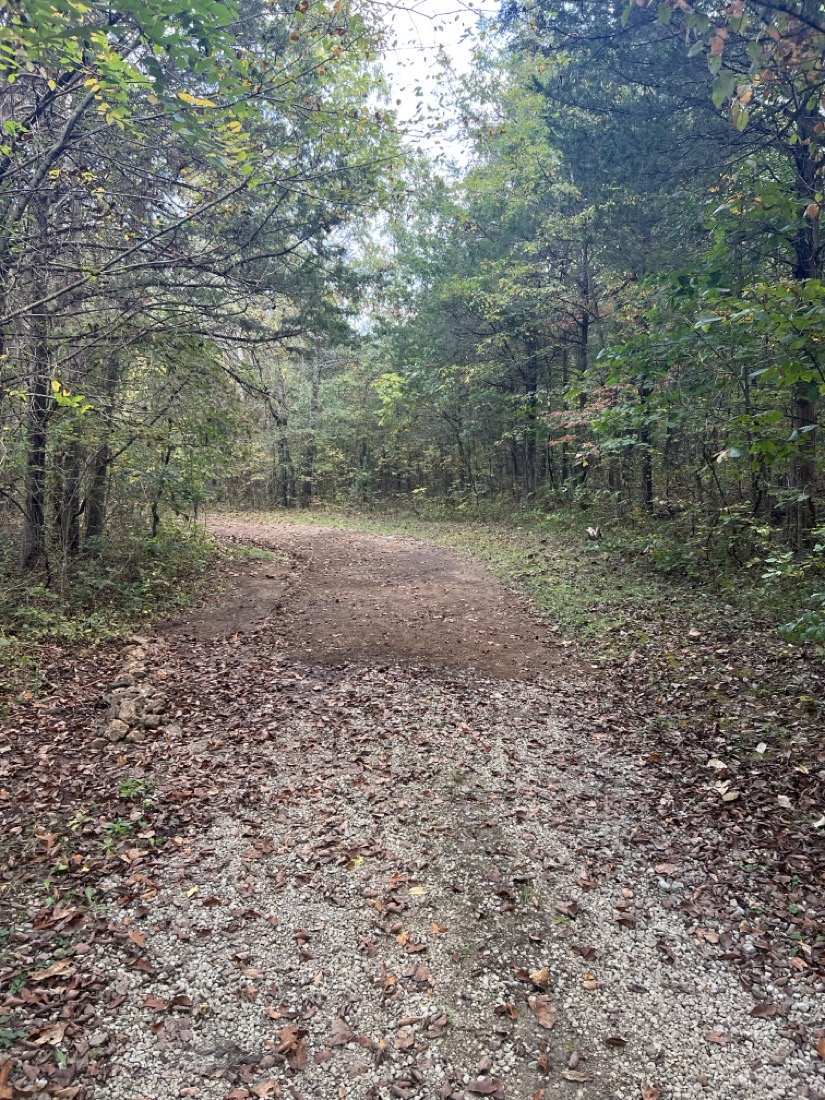
Further down the road, October 3, the road is gradually being resurfaced with dirt and finer creek gravel on top that will mix in to the larger gravel below as the road is used.
I averaged 7-8 wheel barrel loads of gravel pulled from the creek each day for around 90 days for a total of around 630 wheel barrel loads. A averaged 2-3 hours each morning. It was a good work out. By early December I'd cleared 300 feet of creek bed on the downslope side of the road. I repeated the process on the uphill side clearing 60 feet of creek bed of excess gravel.
2024 has been a year without the intense rain events of 2023. That said we have had a few storms roll through and thus far the various sections of resurfaced road have handled those rains as I would hope. There's been no erosion. The creek did flood again 3 times but there's not much I can do beyond what I've done. It will likely always flood with heavy rains. But thanks to the new ditches and increased flow the road has not flooded yet as it would have before. Instead the water has moved off the road into the new ditches and then into the woods as I hoped it would.
It will never be a finished project as the landscape will always evolve. The woods always drop branches and leaves. I know now though that I have to make an effort to maintain the creek and that's something I had never considered before.